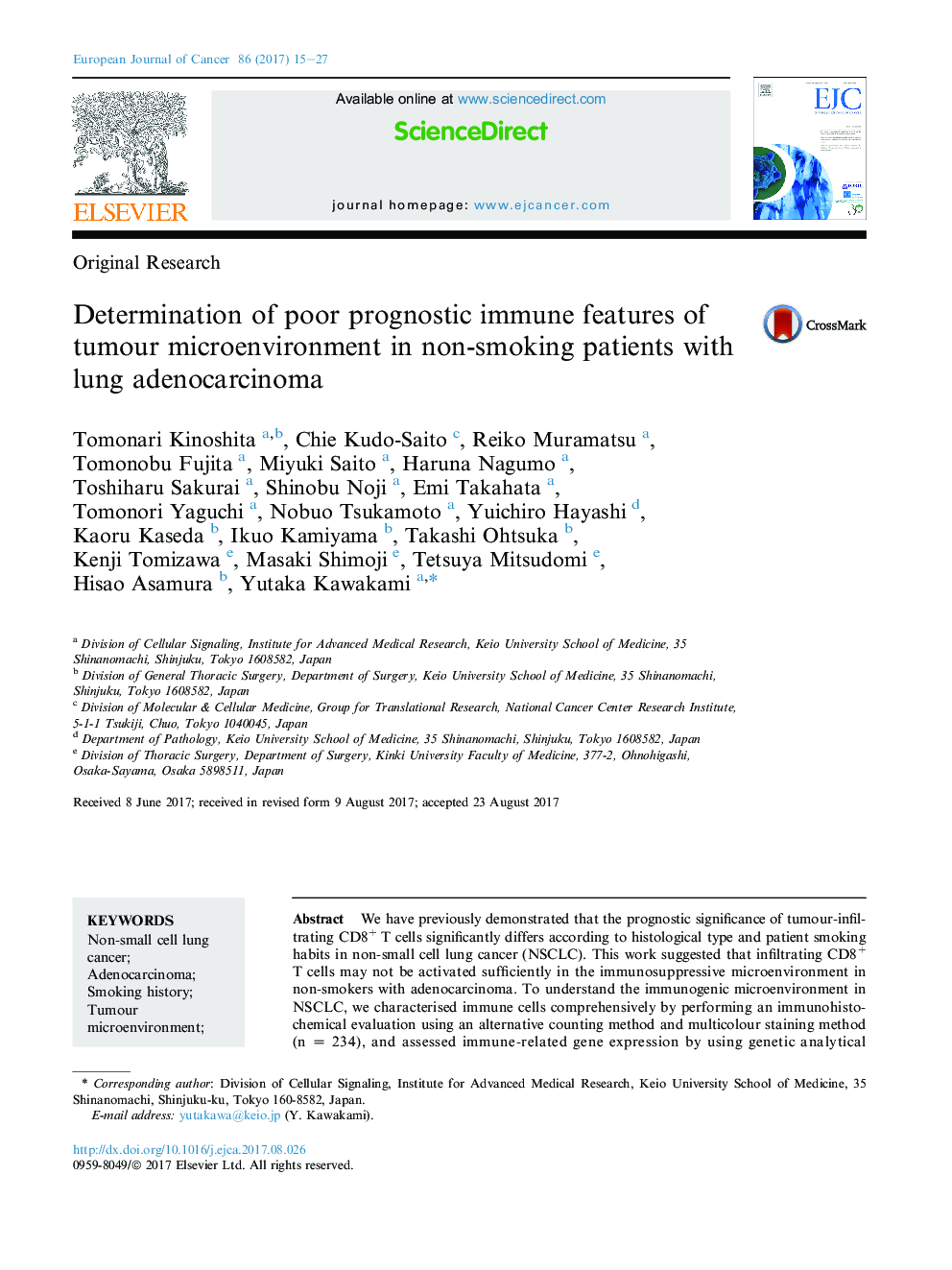| Article ID | Journal | Published Year | Pages | File Type |
|---|---|---|---|---|
| 5526150 | European Journal of Cancer | 2017 | 13 Pages |
â¢Cytotoxic T-Lymphocytes increase in patients with non-adenocarcinoma, but not with adenocarcinoma.â¢Tumour microenvironment is immunosuppressive in non-smokers with lung adenocarcinoma.â¢CD8+GATA3+ and CD8+FOXP3+ T cells infiltrate adenocarcinoma in non-smokers.â¢M2-like macrophages and effector Tregs increase in non-smokers with adenocarcinoma.â¢Immunosuppressive microenvironment in adenocarcinoma determines poor prognosis.
We have previously demonstrated that the prognostic significance of tumour-infiltrating CD8+ T cells significantly differs according to histological type and patient smoking habits in non-small cell lung cancer (NSCLC). This work suggested that infiltrating CD8+ T cells may not be activated sufficiently in the immunosuppressive microenvironment in non-smokers with adenocarcinoma. To understand the immunogenic microenvironment in NSCLC, we characterised immune cells comprehensively by performing an immunohistochemical evaluation using an alternative counting method and multicolour staining method (n = 234), and assessed immune-related gene expression by using genetic analytical approaches (n = 58). We found that high infiltration of activated CD8+ T cells expressing interferon gamma (IFN-γ) and granzyme was correlated with postoperative survival in patients with non-adenocarcinoma. On the contrary, CD8+ T-cell accumulation was identified as a worse prognostic factor in patients with adenocarcinoma, particularly in non-smokers. Infiltrating CD8+ T cells were significantly less activated in this microenvironment with high expression of various immunoregulation genes. Potentially immunoregulatory CD8+ FOXP3+ T cells and immunodysfunctional CD8+ GATA3+ T cells were increased in adenocarcinoma of non-smokers. CD4+ FOXP3+ regulatory T cells expressing chemokine receptor-4 (CCR4)- and chemokine ligand (CCL17)-expressing CD163+ M2-like macrophages also accumulated correlatively and significantly in adenocarcinoma of non-smokers. These characteristic immune cells may promote tumour progression possibly by creating an immunosuppressive microenvironment in non-smoking patients with lung adenocarcinoma. Our findings may be helpful for refining the current strategy of personalised immunotherapy including immune-checkpoint blockade therapy for NSCLC.
